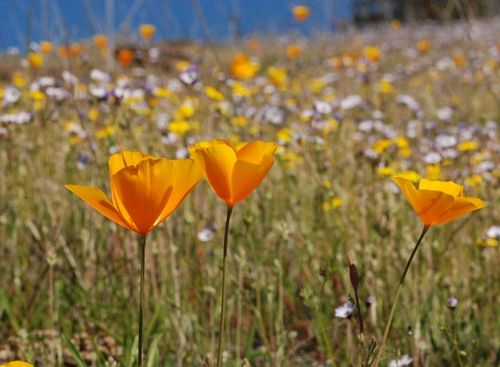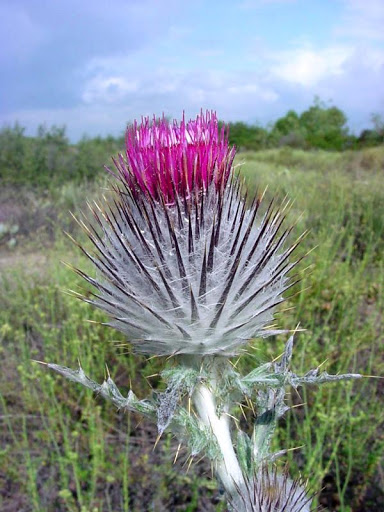Submit Application
Applications should be submitted electronically on CCIA’s website (Application to grow and certify seed) as soon as possible and no later than three (3) weeks after planting. New applicants should contact the CCIA office for instructions on obtaining access to the online application system.
- Login as a Member. If you need a login and password please contact Yossue Trejo at ytrejo@ucdavis.edu.
- After you login successfully, the next page will show a table of all your certification applications. The link to begin a Native Seed Program Application is near the bottom of this page along with a few other links. If you have no applications you will see only the links.
Program Fee
- A Generation Zero (G0) application fee of $50/acre plus a site inspection of $350. A G0 application will have a minimum fee of $400.
- All other native seed applications will be charged $50.00 per acre (with a minimum fee of $125).
General Standards
The standards on this sheet address seeds and seedlings, and other propagating materials of native and naturalized species that have not been released as a variety. Eligible species include indigenous or non-indigenous trees, shrubs (including vines), or herbaceous plants (forbs and grasses).
- Source Identified Germplasm - Source Identified propagating materials are seed, seedlings, or other propagating materials that are an unrestricted representation of a plant population on a given site, and for which no selection or testing of the parent population or its progeny has been made, produced so as to ensure genetic purity and identity from either:
- Rigidly defined natural stands or seed, production areas or
- Seed fields or orchards.
Selected Germplasm - Selected propagating materials shall be the progeny of phenotypically selected plants of untested parentage that have promise but not proof of genetic superiority or distinctive traits, produced so as to ensure genetic purity and identity from either:

- Rigidly defined natural stands or seed production areas, or
- Seed fields or orchards. This definition is equivalent to the OECD "Untested Seed Orchard" category and may be labeled as such by special tag if required.
- Tested Germplasm - Tested propagating materials shall be the progeny of plants whose parentage has been tested and has proven genetic superiority or possesses distinctive traits for which the heritability is stable, as defined by the certifying agency, but for which a variety has not been named or released. These materials must be produced so as to ensure genetic purity and identity from either:
- Rigidly controlled and isolated natural stands or individual plants, or
- Seed fields or orchards.
Methods used and monitoring of selection and testing of parent material to qualify for different germplasm types shall be determined by the California Crop Improvement Association (CCIA) for each species or group of species.
Designation of Germplasms of Seed
The terms Breeder, Foundation, Registered, and Certified designate and define classes of named and released varieties and are not applicable to Native Seed Program germplasms. Source Identified, Selected, and Tested germplasm types use numbers to designate generations.
The generation is not defined for indigenous or naturalized parent plants in an unrestricted wildland plant population. Seeds harvested from such populations in a non-selective manner are designated Generation Zero (abbreviated G0) since they are a natural, unrestricted representation of the parent plants. The germinant plants from this seed are also designated G0, from which G1 seeds are harvested. G1 seeds produce G1 plants from which G2 seeds are harvested, and so on.
The generation is defined as Generation 0 for parent plants preferentially selected from a cultivated or wildland population; this definition follows the convention for cultivated crop development. The seeds harvested from such G0 parent plants are designated G1. The germinant plants from this seed are also designated G1, from which G2 seeds are harvested. G2 seeds produce G2 plants from which G3 seeds are harvested, and so on.
Limitations of Generations
Limitation of generations for Native Seed Program germplasm is not required, but may be specified by the original applicant/developer of a designated germplasm. This limitation may be amended by the originator/developer. Such amendment shall be communicated in writing by the originator/developer to the owner of the specified seed lot, and to the associated seed certifying agency. Such amendment must indicate whether it pertains to a specific seed lot, or is a permanent change for the germplasm. The CCIA will forward the communication to the AOSCA office for circulation to all Seed Certifying Agencies.
The appropriate seed generation number for a designated germplasm must be tracked by the CCIA. Tracking of asexual generations is optional; otherwise the asexual material retains the generation of the parent plants.
Unit of Certification
An individual plant, clone, or stand of plants (or field or orchard) may be certified in producing Source Identified, Selected, or Tested seed. Seed production zones and/or breeding zones may be defined as a unit of certification for Source Identified and Selected seed.
Production of Seed
- For Source Identified seed collected from natural stands, verification of the collection site is required. Compliance with regard to correct identification of species, location of natural stand, and seed yield must be verified by whatever means is deemed efficient and enforceable by the CCIA.
- For Selected or Tested seed collected from natural stands, at least one field inspection shall be made prior to pollination. At this time, compliance with regard to roguing and isolation as covered by the applicable agency standards will be checked. For Selected and Tested seed, an inspection will be made just prior to seed maturity or during harvest.
- All germplasm types grown in seed fields or orchards shall follow established certification requirements and standards for similar crop varieties if applicable, or those developed by the CCIA for a specific species.
- Producers of seedling or otherwise propagated nursery or container stock shall be supervised sufficiently so that the certifying agency knows that the stock was produced from the germplasm type claimed.
Field Eligibility
For natural stands of the Tested germplasm type, the exact geographic source of the parent plants and the stand history must be known. Location (designated by section or comparable land survey unit) and elevation (nearest 500 feet) of the site of seed production must be shown on the tag.
Location where Selected or Source-Identified seed was collected from natural stands shall be defined by means of administrative, geographic, latitudinal, or other appropriate boundaries or descriptions submitted by the applicant/developer of the germplasm, and reviewed and accepted by the state certifying agency. State, county (seed production area, or geographic zone), and elevation (nearest 500 feet) is the minimum required to be shown on the tag.
For all germplasm types where seed or other propagating materials are produced in artificially established fields or orchards, the specific geographic origin of the parent material must be known and may be listed on the tag. The location printed on the tag shall be the location (specific site or county/parish or seed production area/zone) of the field or orchard.
Isolation
For rigidly controlled natural stands of Tested, Selected, or Source Identified germplasm types, an adequate isolation zone shall be maintained free of off-type plants and other cross pollinating species. The isolation distance shall be set for each species by the CCIA.
There shall be no isolation requirements for Selected or Source-Identified seed collected from natural seed zones and/or breeding zones.
Isolation for all germplasm types when grown in seed fields or orchards shall follow isolation requirements for similar crop varieties if applicable, or those developed by the CCIA for specific species.
For all germplasm types grown in a seed field or orchard, and the selection and testing of plant material shall be in accordance with the requirements of the CCIA for each species or group of species.
Harvesting
Harvesting is subject to the supervision of the County Agricultural Commissioner who must be contacted prior to harvest. Any seed moved out of the county for conditioning must be accompanied by an Intercounty Permit issued by the Commissioner.
Sampling and Testing
For seed of species not covered by the rules for testing seeds of the Association of Official Seed Analysts, the analysis and testing shall be in accordance with the rules of the International Seed Testing Association or appropriate state or federal laboratories as determined by the certifying agency.
Seed Inspection
All seed must be sampled and tested after conditioning and the seed lot must meet or exceed Native Seed Program standards for that crop. A seed lab using the Association of Official Seed Analyst “Rules for Testing” must test the sample. A Registered Seed Technologist must sign each lab analysis. In addition to AOSA rules, specific seed testing may be required to meet CCIA seed certification standards. Seed lots must meet minimum purity and germination requirements established for each species.
Tagging
The following tag or label colors shall apply: Source Identified Germplasm - Yellow; Selected Germplasm - Green; Tested Germplasm- Blue
- Format of face side of label: The respective seed germplasm type (TESTED, SELECTED, OR SOURCE IDENTIFIED) must be printed on the top line across the tag or label. Exception: To satisfy requirements of the OECD Scheme, seed from Selected Germplasm seed orchards may be tagged with a pink tag having UNTESTED SEED ORCHARD, printed on the top line across the tag or label.
- Content - The generation of the seed may be indicated in the center of the tag along with such information as species, selection number, lot number, location, elevation, site index, seed zone and/or breeding zone, etc. (see tag examples in the AOSCA Native Plant Connection).
- Wildland collected seed documented solely by a SITE IDENTIFICATION LOG PART 1 (or equivalent information; see AOSCA Guidelines for Permitting & Certification of Wildland Collected Seed), shall be labeled as G0/G0 and is eligible for direct out-planting but not for seed increase.
- If documentation includes both the SITE IDENTIFICATION LOG PARTS 1 and 2, (or equivalent information), then the seed may be eligible for increase. If a limitation of generations has not been specified, then the generation shall be listed on the tag as G0/GX, G1/GX, etc., where X = “unspecified” or “unlimited”. If a limitation of generations has been specified, then the generation of the tagged material and the number of increase generations permitted shall be stated on the certification tag, e.g. G0/G3, G1/G3, etc. (read “generation zero, or generation one of three generations” permitted).
- Accelerated downgrading of generation(s) can be specified on the tag to limit further increases, e.g., from G1/G3 to G2/G3 or G3/G3.
- Selected or Tested Germplasm may not be labeled as Source Identified Germplasm.
